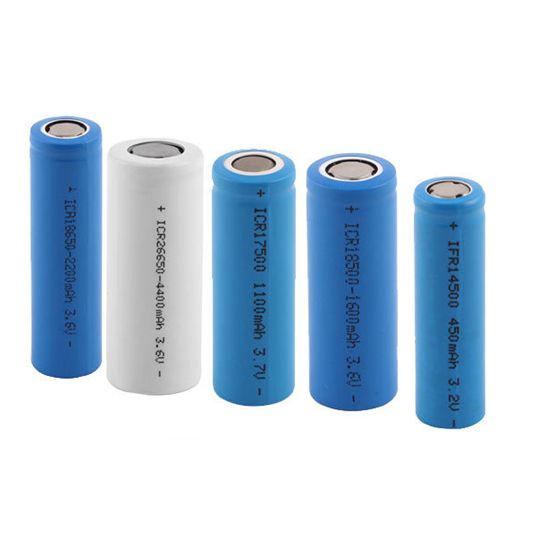How to charge 18650 battery?
Aug 18, 2020 Pageview:1925
The myriad of portable devices and electronic gadgets of all kinds that we have become accustomed to using all the time (telephones, radios, iPods, watches, remote controls, cameras, toys, pacemakers, hearing aids, etc.) depend on their functioning for small or large batteries, which carry them inside. For more info kindly check https://www.large.net/.
From the invention of the Volta battery (1799) onwards, electric batteries such as the 18650 battery has become not only an indispensable tool in the laboratory of every scientist who studied electrical phenomena (previously, to produce significant quantities of electricity, one could only rely on electrostatic machines to rubbing and on accumulators of charges such as Leiden bottles ), but also the source of electricity that set in motion the first fundamental practical uses of "weak currents" such as telegraphs and telephones .

How to charge 18650 battery
The 18650 lithium-ion battery is easy to charge, but due to security issues, the charging process may sometimes become complicated, often requiring protection and control circuits.
The basic method is to charge the battery at constant current from 0.2C to 0.7C depending on the manufacturer until the battery reaches 4.2V per cell.
Maintain the charging voltage at 4.2V until the charging current drops to 10% of the initial charge rate. The termination condition is the drop-in load current to 10%. A higher charging voltage and the terminating current vary slightly with the manufacturer.

A charge timer must be included for additional safety
The18650 lithium-ion battery charger comes as a voltage-varying device with equal similarities to an acid battery charger. The contrast lies in an advanced voltage capacity per cell, a smaller voltage limit and no float or pulsating charge when the battery is fully charged.
As the 18650 lithium-ion batteries tends to provide great tolerance with regards to interruption of voltage, Li-Ion cell manufacturers are very articulate with regards to adjusting the right amount of voltage.
Most of the current 18650 lithium-ion batteries can be charged at a voltage of 4.20, while the tolerance capacity for all lithium-ion batteries stand at +/- 0.05V per cell.
The charging duration of the 18650 lithium-ion battery, when loaded with an initial current of 1C, is approximately 2 hours. While charging, the battery does not get hot, and a full charge is usually attained when the voltage gets to the upper voltage limit and the current drops, if equal to 3% of the normal load output.
Stepping up the charging load on a 18650 lithium-ion battery through its charger would not greatly reduce the charging time. Although the peak voltage is reached faster with larger currents, the peak load would consume more time. No pulsating charge should be used because this battery has the inability to accommodate overload. Pulse charging could cause deposition of lithium, a situation which makes the battery quite unstable when used. Rather, a brief peak charge should be used to make up for the little amount of possible discharge of the battery. Considering the charger being used and battery discharge rate, a peak charge can be done once every 20 days.
What happens if a 18650 lithium-ion battery becomes overcharged during a charge cycle?
The 18650 batteries are usually made to work optimally within their regular operating range, but usually become unstable when charged at higher voltages. With voltage charges above 3.3V, the battery experiences deposits of lithium metal on its terminals. Also, the cathode is converted into an oxidizing medium and cause oxygen releases. Overload makes the battery to warm up rapidly.
Great emphasis has been given to the safe use of all 18650 lithium-ion batteries. Commercial 18650 lithium-ion batteries tend to contain a protective circuitry which stops the cell voltage from increasing excessively during a charge cycle. The safety limit is usually fixed at 4.30V per cell.
Many batteries tend to encounter mechanical changes in pressure which distorts the current flow when the safety limit is crossed. Also, the voltage control circuits tend to interfere with the battery operations during a situation of under voltage or overvoltage.
How to charge 18650 battery without charger
The 18650 Lithium-ion batteries usually require a steady charging rate and it shouldn't be fast-charged. If a situation arises where you've misplaced your 18650 Lithium-ion battery chargers, don't try to improvise by using a different charger. The outcome could be harmful, as the charging rate could be higher than the tolerance capacity of your battery. The best option to charge your 18650 Lithium-ion battery without using a charger is through connecting the device which your battery powers to a USB cord, connected to your computer.

How to charge 18650 battery with USB
The USB cords usually contain several data wires, but it also comes with an inbuilt charging wire whose output is quite perfect for charging the 18650 lithium-ion battery: the USB charging wire supplies over 5 volts from the computer, with a milliamp current ranging between 100mA to 500mA.
Steps to charging a lithium-ion battery without a charger using a USB cable.
1. Inspect the device your 18650 lithium-ion battery, as most devices usually have USB sockets.
2. Fix an end of a USB cable into the device's USB socket. Ensure the 18650 lithium-ion battery has already been inserted in the device.
3. Fix the second end of your USB cable into your pc's USB outlet. Put on your computer and the 18650 lithium-ion battery will begin to charge. The device would indicate the current level of the battery and also when the battery has been fully charged.
- Prev Article: What are lithium batteries made of?
- Next Article: How Many Cells Are In A Lithium Battery?
Leave Message
Hottest Categories
-
Hottest Industry News
-
Latest Industry News











